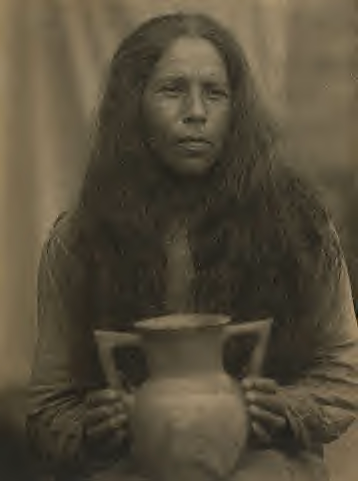
Spirit Hawk ~ Aniyuhnwiya (Story Teller)
The generic name for snakes is indädû'. They are all regarded as anida'wehï, "supernaturals," having an intimate connection with the rain and thunder gods, and possessing a certain influence over the other animal and plant tribes. It is said that the snakes, the deer, and the ginseng act as allies, so that an injury to one is avenged by all. The feeling toward snakes is one of mingled fear and reverence, and every precaution is taken to avoid killing or offending one, especially the rattlesnake. He who kills a snake will soon see others; and should he kill a second one, so many will come around him that whichever way he may turn he will become dazed at the sight of their glistening eyes and darting tongues and will go wandering about like a crazy man, unable to find his way out of the woods. To guard against this misfortune there are certain prayers which the initiated say in order that a snake may not cross their path, and on meeting the first one of the season the hunter humbly begs of him, "Let us not see each other this summer." Certain smells, as that of the wild parsnip, and certain songs, as those of the Unika'wï or Townhouse dance, are offensive to the snakes and make them angry. For this reason the Unika'wï is held only late in the fall, after they have retired to their dens for the winter.
When one dreams of being bitten by a snake he must be treated the same as for an actual bite, because it is a snake ghost that has. bitten him; otherwise the place will swell and ulcerate in the same way, even though it be years afterwards. For fear of offending them, even in speaking, it is never said that a man has been bitten by a snake, but only that he has been "scratched by a brier." Most of the beliefs and customs in this connection have more special reference to the rattlesnake.
The rattlesnake is called utsa'nätï which may be rendered, "he has a bell," alluding to the rattle. He was once a man, and was transformed to his present shape that he might save the human race from extermination by the Sun, a mission which he accomplished successfully after others had failed. By the old men he is also spoken of as "the Thunder's necklace" and to kill one is to destroy one of the most prized ornaments of the thunder god. In one of the formulas addressed to the Little Men, the sons of the Thunder, they are implored to take the disease snake to themselves, because "it is just what you adorn yourselves with."
For obvious reason the rattlesnake is regarded as the chief of the snake tribe and is feared and. respected accordingly. Few Aniyuhnwiya will venture to kill one except under absolute necessity, and even then the crime must be atoned for by asking pardon of the snake ghost, either in person or through the mediation of a priest, according to a set formula. Otherwise the relatives of the dead snake will send one of their number to track up the offender and bite him so that he will die. The only thing of which the rattlesnake is afraid is said to be the plant known as campion, or "rattlesnake's master" (Silene stellata), which is used by the doctors to counteract the effect of the bite, and it is believed that a snake will flee in terror from the hunter who carries a small piece of the root about his person. Chewed linn bark is also applied to the bite, perhaps from the supposed occult connection between the snake and the thunder, as this tree is said to be immune from the lightning stroke.
Notwithstanding the fear of the rattlesnake, his rattles, teeth, flesh, and oil are greatly prized for occult or medical uses, the snakes being killed for this purpose by certain priests who know the necessary rites and formulas for obtaining pardon. This device for whipping the devil around the stump, and incidentally increasing their own revenues, is a common trick of Indian medicine men. Outsiders desiring to acquire this secret knowledge are discouraged by being told that it is a dangerous thing to learn, for the reason that the new initiate is almost certain to be bitten, in order that the snakes may "try" him to know if he has correctly learned the formula. When a rattlesnake is killed the head must be cut off and buried an arm's length deep in the ground and the body carefully hidden away in a hollow log. If it is left exposed to the weather, the angry snakes will send such torrents of rain that all the streams will overflow their banks. Moreover, they will tell their friends, the deer, and the ginseng in the mountains, so that these will hide themselves and the hunters will seek them in vain.
The tooth of a rattlesnake which has been killed by the priest with the proper ceremonies while the snake was lying stretched out from east to west is used to scarify patients preliminary to applying the medicine in certain ailments. Before using it the doctor holds it between the thumb and finger of his right hand and addresses it in a prayer, at the end of which the tooth "becomes alive," when it is ready for the operation. The explanation is that the tense, nervous grasp of the doctor causes his hand to twitch and the tooth to move slightly between his fingers. The rattles are worn on the head, and sometimes a portion of the flesh is eaten by ball players to make them more terrible to their opponents, but it is said to have the bad effect of making them cross to their wives. From the lower half of the body, thought to be the fattest portion, the oil is extracted and is in as great repute among the us for rheumatism and sore joints as among the white mountaineers. The doctor who prepares the oil must also eat the flesh of the snake. In certain seasons of epidemic a roasted (barbecued) rattlesnake was kept hanging up in the house, and every morning the father of the family bit off a small piece and chewed it, mixing it then with water, which he spit upon the bodies of the others to preserve them from the contagion. It was said to be a sure cure, but apt to make the patients hot tempered.
The copperhead, wâ'dige-askâ'lï "brown-head," although feared on account of its poisonous bite, is hated, instead of being regarded with veneration, as is the rattlesnake. It is believed to be a descendant of a great mythic serpent and is said to have "eyes of fire," on account of their intense brightness. The blacksnake is called gûle'gï, "the climber." Biting its body is said to be a preventive of toothache, and there is also a belief, perhaps derived from the whites, that if the body of one be hung upon a tree it will bring rain within three (four?) days. The small greensnake is called, sälikwâ'yï, the same name being also applied to a certain plant, the Eryngium virginianum, or bear grass, whose long, slender leaves bear some resemblance to a greensnake. As with the blacksnake, it is believed that toothache may be prevented and sound teeth insured as long as life lasts by biting the greensnake along its body. It must be held by the head and tail, and all the teeth at once pressed down four times along the middle of its body, but without biting into the flesh or injuring the snake. Some informants say that the operation must be repeated four times upon as many snakes and that a certain food tabu must also be observed. The water moccasin, kanegwâ'tï, is not specially regarded, but a very rare wood snake, said to resemble it except that it has blue eyes, is considered to have great supernatural powers, in what way is not specified. The repulsive but harmless spreading adder (Heterodon) is called dalïkstä', "vomiter," on account of its habit of spitting, and sometimes kwandäya'hû, a word of uncertain etymology. It was formerly a man, but was transformed into a snake in order to accomplish the destruction of the Daughter of the Sun. For its failure on this occasion it is generally despised.
The Wahnenauhi manuscript mentions a legend of a great serpent called on account of its color the "ground snake." To see it was an omen of death to the one who saw it, and if it was seen by several persons some great tribal calamity was expected. So says Spirit Hawk ^i^.


4 comments:
interesting reading! did you read my amazing experience of hopi ear candles this week. I wanted your opinion on it!
Not yet ... on my way ...
good post, t... as all living things, i hold snakes in high regard... but would not hesitate to protect someone from danger
where's the link back to efx?
Post a Comment